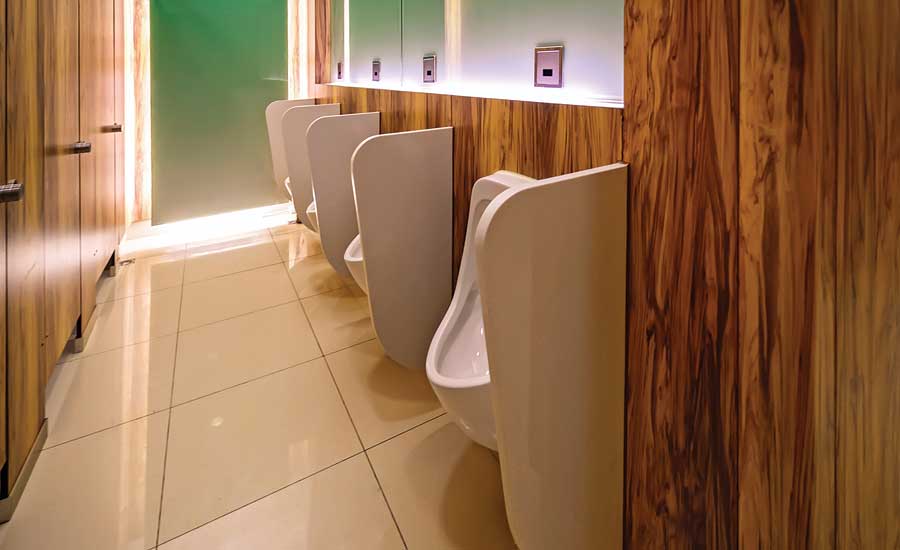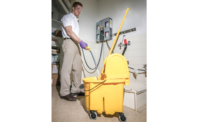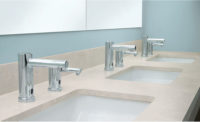You may have seen them around and not known it. You’ve been in a public restroom and thought something looked a little “off,” perhaps with the fittings on the wall. But you were at the event to get some video for your company’s social media initiative and not to spend your time probing around in the restroom.
Chances are you stumbled onto, figuratively speaking, a wall of urinals with no nice chrome piping or flushometers. These urinals which don’t use water instead do their thing using Sir Isaac Newton’s magnificent scientific discovery, gravity, instead of a rush of water. This not using water trait is useful in places such as our drought-plagued Western region, where some municipalities have mandated their use in government and civic buildings.
In 1991 the Waterless Co. founded by Klaus Reichardt (who had the concept in the 1980s) began installations of the gravity urinal. Reichardt was spurred by the droughts of the 1970s and 1980s to begin developing what would become the gravity urinal. It took almost a decade before other manufacturers started producing them. That list includes: Falcon Waterfree Technologies, Sloan Valve Co., Duravit, Kohler and many others.
At first, as far as plumbers were concerned, gravity urinals were considered a threat to the public health and, since plumbers rightly view themselves as guardians of public health, the reception for the new contraptions was less than warm. See, the old-timers reasoned, by not flushing and washing the urinal down with each use, diseases might develop. It would be anarchy, what with all that gravity causing the liquid waste to flow down into the plumbing system instead of forcing it down with a cleansing, measured ker-sploosh of water.
There also was an ulterior, economic reason for the plumbers’ initial disdain afoot as well. Gravity urinals don’t need any inflow piping or moving parts. After all, urine is a liquid and will easily flow down a drain. However the plumbing codes do still require a water distribution line rough-in to the location of the urinal which uses no water to allow for an approved backflow prevention device in the event of a retrofit.
What is not always thought of are concerns of sewer gas and odors becoming a problem. After all, we are talking about ammonia- and nitrogen-filled liquids we want to wish into the cornfields. Unlike standard fixtures using a p-trap, gravity urinals addressed this in basically two different ways, one that uses a cartridge and one that uses oil directly in the drain pipe, although both types work in basically the same way. The urine flows from the bowl through an oil-based liquid and down through the waste pipe. Because the liquid waste is heavier than oil, it will sink through it and into the sewer while the oil floats above acting as a seal.
So, what’s the big deal with “gravity” urinals? They’re a great opportunity for engineers to sell the customer a maintenance agreement and create reoccurring revenue. For example Waterless Company recommends that the “Ecotrap” be replaced twice to four times annually, depending on usage. Kohler does not use a cartridge, but instead recommends a two-week flush out, cleaning and replacing the sealing liquid with this cleaning. Falcon Waterfree Technology uses a cartridge and it has a blue indicator that disappears when it needs to be changed. Other manufacturers, of course, use their own or similar methods.
Although “gravity” urinals are thought of as not needing water ever, it is recommended that periodically several gallons of water (preferably hot) are poured into the urinal to clean the pipes. Typically this should be done when the cartridge or oil is changed. This will help to prevent buildup of struvite (“urine stone”) and calcium phosphate in the pipes, which will cause blockages.
Waterless urinals are becoming more popular, especially in areas that suffer droughts. For example, Arizona has made it mandatory to use waterless urinals in state buildings as of 2005. In 2006, the Army Corps of Engineers took notice and has mandated as of 2010 waterless urinals be used. Mark Mahoney, a marketing representative for Kohler, says these are installed in the New York Mets’ Citi Field baseball stadium and the Shedd Aquarium in Chicago.
Certification programs such as LEED are recognizing these and other water conservation items in their certification programs. According to the U.S. Green Building Council, waterless urinals can receive LEED points water reduction based upon a 20% to 30% reduction.
Environmental concerns and water conservation are having a major effect on the plumbing industry and will continue to see changes.



